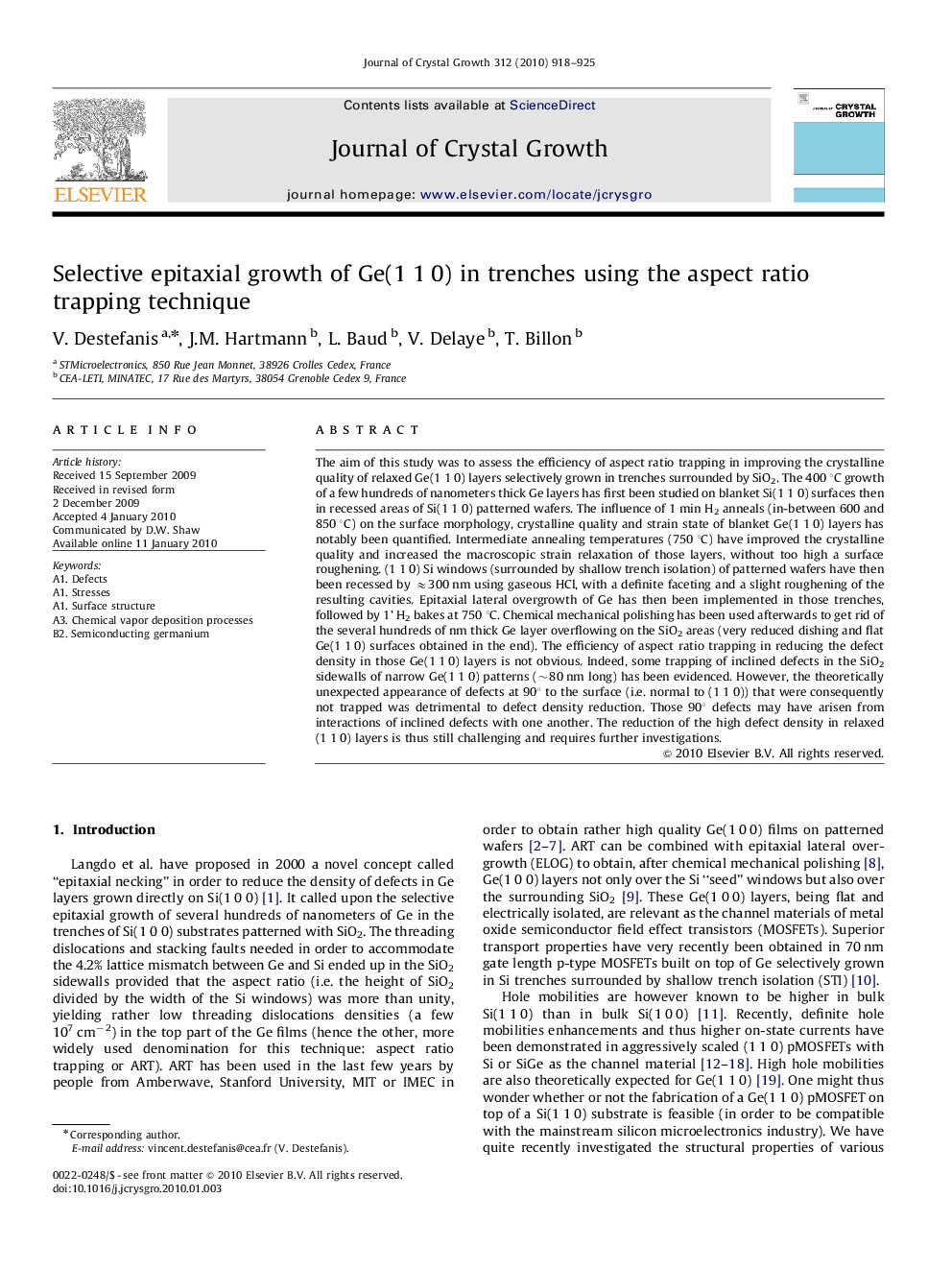| کد مقاله | کد نشریه | سال انتشار | مقاله انگلیسی | نسخه تمام متن |
|---|---|---|---|---|
| 1793404 | 1023675 | 2010 | 8 صفحه PDF | دانلود رایگان |

The aim of this study was to assess the efficiency of aspect ratio trapping in improving the crystalline quality of relaxed Ge(1 1 0) layers selectively grown in trenches surrounded by SiO2. The 400 °C growth of a few hundreds of nanometers thick Ge layers has first been studied on blanket Si(1 1 0) surfaces then in recessed areas of Si(1 1 0) patterned wafers. The influence of 1 min H2 anneals (in-between 600 and 850 °C) on the surface morphology, crystalline quality and strain state of blanket Ge(1 1 0) layers has notably been quantified. Intermediate annealing temperatures (750 °C) have improved the crystalline quality and increased the macroscopic strain relaxation of those layers, without too high a surface roughening. (1 1 0) Si windows (surrounded by shallow trench isolation) of patterned wafers have then been recessed by ≈300 nm using gaseous HCl, with a definite faceting and a slight roughening of the resulting cavities. Epitaxial lateral overgrowth of Ge has then been implemented in those trenches, followed by 1' H2 bakes at 750 °C. Chemical mechanical polishing has been used afterwards to get rid of the several hundreds of nm thick Ge layer overflowing on the SiO2 areas (very reduced dishing and flat Ge(1 1 0) surfaces obtained in the end). The efficiency of aspect ratio trapping in reducing the defect density in those Ge(1 1 0) layers is not obvious. Indeed, some trapping of inclined defects in the SiO2 sidewalls of narrow Ge(1 1 0) patterns (∼80 nm long) has been evidenced. However, the theoretically unexpected appearance of defects at 90° to the surface (i.e. normal to (1 1 0)) that were consequently not trapped was detrimental to defect density reduction. Those 90° defects may have arisen from interactions of inclined defects with one another. The reduction of the high defect density in relaxed (1 1 0) layers is thus still challenging and requires further investigations.
Journal: Journal of Crystal Growth - Volume 312, Issue 7, 15 March 2010, Pages 918–925